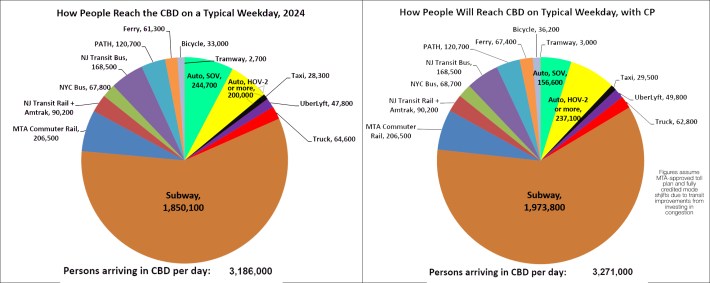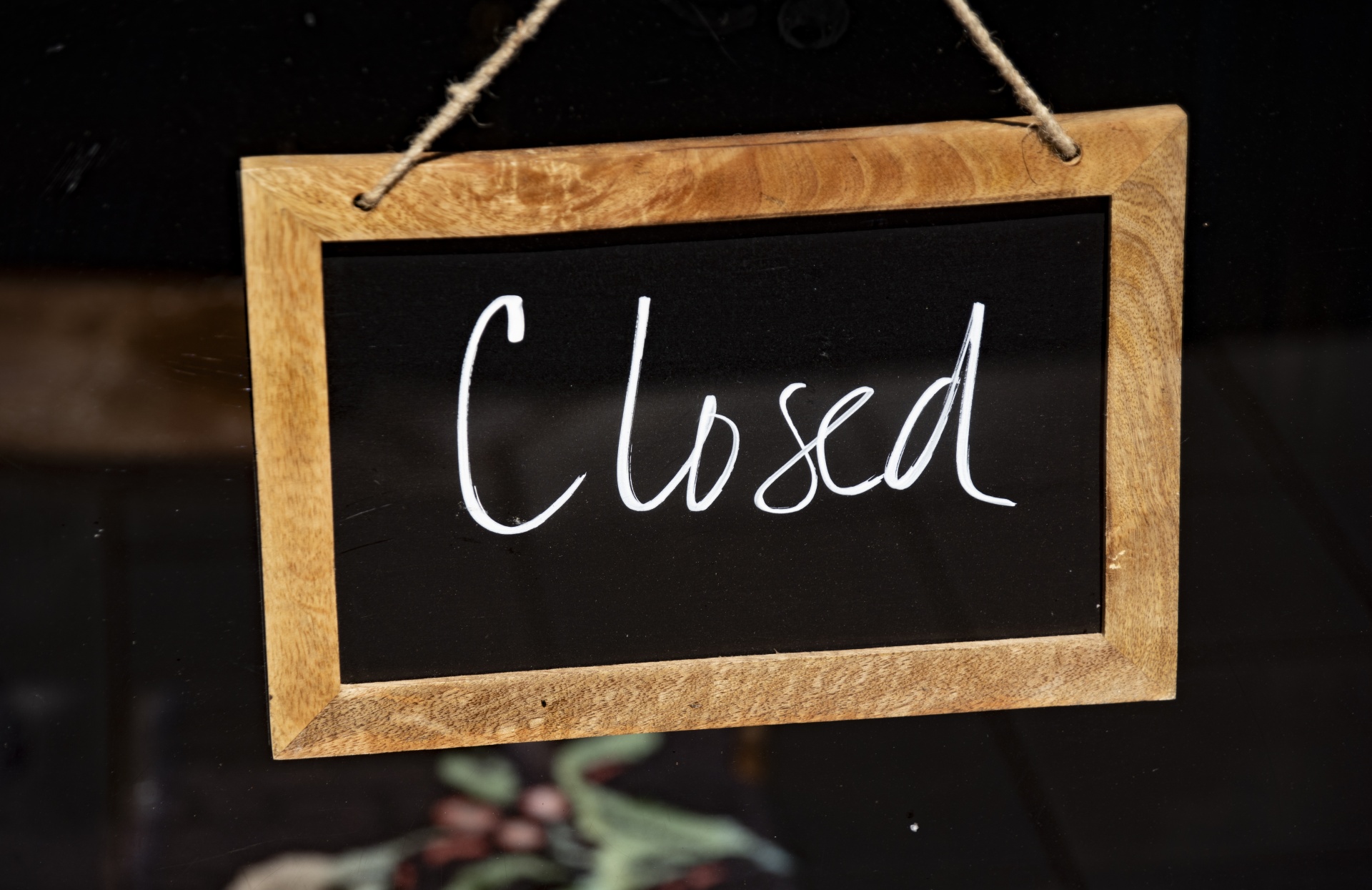So many canards, so little time.
Winning back congestion pricing after Gov. Hochul's cancellation requires dispelling the most enduring myths about it. And there may be no more pernicious fabulation than that small businesses in the congestion zone will suffer when fewer motorists drive in.
Small businesses are diverse and hard to summarize. There’s no exact way to gauge their patronage by drivers (or transit riders or people on foot or bicycle, for that matter). Nor is there a precise methodology to assess the myriad of new arrangements that will arise as driving into Manhattan below 60th Street becomes pricier (though quicker) while transit and non-motorized travel become easier and safer.
But there is an indirect way to estimate congestion pricing’s effects on small businesses, and that’s to compute the change in the number of people who will come to the Manhattan congestion zone once the congestion toll is in place. And on this score, the aye’s have it: I estimate that, with congestion pricing in place, 85,000 more people will come to the zone on an average day than at present. That’s a rise of 2.7 percent, from 3,186,000 to 3,271,000. Or, if you prefer rounding, from 3.2 million to 3.3 million.

Congestion pricing will bring a multitude of changes to the city. Here’s a broad-brush view of the key categories of changes:
- Fewer automobiles will be driven to the zone. This reduction will be attenuated somewhat by the fact that some of the falloff will be in trips through the zone that didn't help Manhattan small businesses anyway.
- More transit trips will be made to the zone, due to two phenomena:
- some (though by no means all) car users whom the tolls will price off the roads will switch to transit.
- investing the congestion revenues into faster, more reliable and more accessible subways and buses will entice more trips in those modes, including some by folks who today avoid traveling to the zone at all because transportation there is too unpredictable or unpleasant.
- Higher car-occupancies, as the tolls’ pocketbook impact leads to a bit more carpooling.
Now, quantification of that:
- An estimated 91,000 fewer private cars will enter the congestion zone on an average weekday. Notably, 20,000 are through-trips, e.g., from Brooklyn to New Jersey, whose disappearance won’t impact businesses in the zone. That makes the effective vehicle reduction 71,000 per day.
- Trips using transit will grow by 125,000 a day, almost all of that in subways rather than buses. Percentage-wise, that’s less than a 7-percent increase, from 1,850,000 per day at present, to 1,975,000 with congestion pricing. A majority of the increase will be via the carrot of motorists and others attracted to better subways, as opposed to the stick of motorists switching to trains after being priced off the roads by the toll.
- Car occupancies — literally, the number of people per automobile — will rise by 9 to 10 percent, from the current average of 1.33, to 1.46 with congestion pricing. The rise is estimated to be sharper for non-work trips (entertainment, shopping, medical, fun) than work trips.
The projected increase in car occupancies helps keep down the anticipated drop in people-arrivals to the congestion zone in automobiles. Though the number of vehicles landing in the zone shrinks by 71,000, the number of people arriving in vehicles decreases by just 51,000.
My model’s 9.5-percent rise in car occupancies is entirely plausible. Mathematically, it requires only that every 10th or 11th auto trip into the zone adds a single additional passenger. That seems to me erring on the low side, given the vaunted economic pain of the $15 congestion fee. Certainly, there will be no shortage of apps pairing rides to the Central Business District with riders.
Combining the 125,000 rise in person-entries via transit with the 51,000 drop in person-entries via auto, and factoring in slight upticks in bicycle and pedestrian and ferry commuting as well as auto trips to the zone in taxis and Ubers, yields the 85,000 daily increase in people-arrivals to Manhattan south of 60th Street. (Yes, for-hire vehicle entries will increase somewhat with congestion pricing, due to the attenuation of the new zone surcharges by reduced meter “wait time” along with the increased efficiency of car movements to and in the zone as the number of private cars thins somewhat.)
Even if you completely discount my modest upward bump in carpooling — and that’s quite a negation — congestion pricing still yields a 45,000 net increase in the number of people coming to (not through) the CBD on an average day.
And isn’t that what everyone wants — outside of a few “get off my lawn” cranks like the owner of the Pershing Square Cafe? More people, not fewer, knocking on the doors of Manhattan businesses? And, just maybe, with congestion pricing, those folks will be happier, healthier and heartier when they’re ordering dinner or trying on a new outfit or browsing a museum store. Perhaps their trip to Birdland or the August Wilson Theater and back home will be pleasant enough to entice them to come back again ... and again.
Technical note: For this analysis, Komanoff took full credit in his model for improved subway service, rather than half. The current edition of his “BTA” model is, as always, available for download (20 MB Excel file). Figures here may be found in the file’s Results and Travel tabs.






